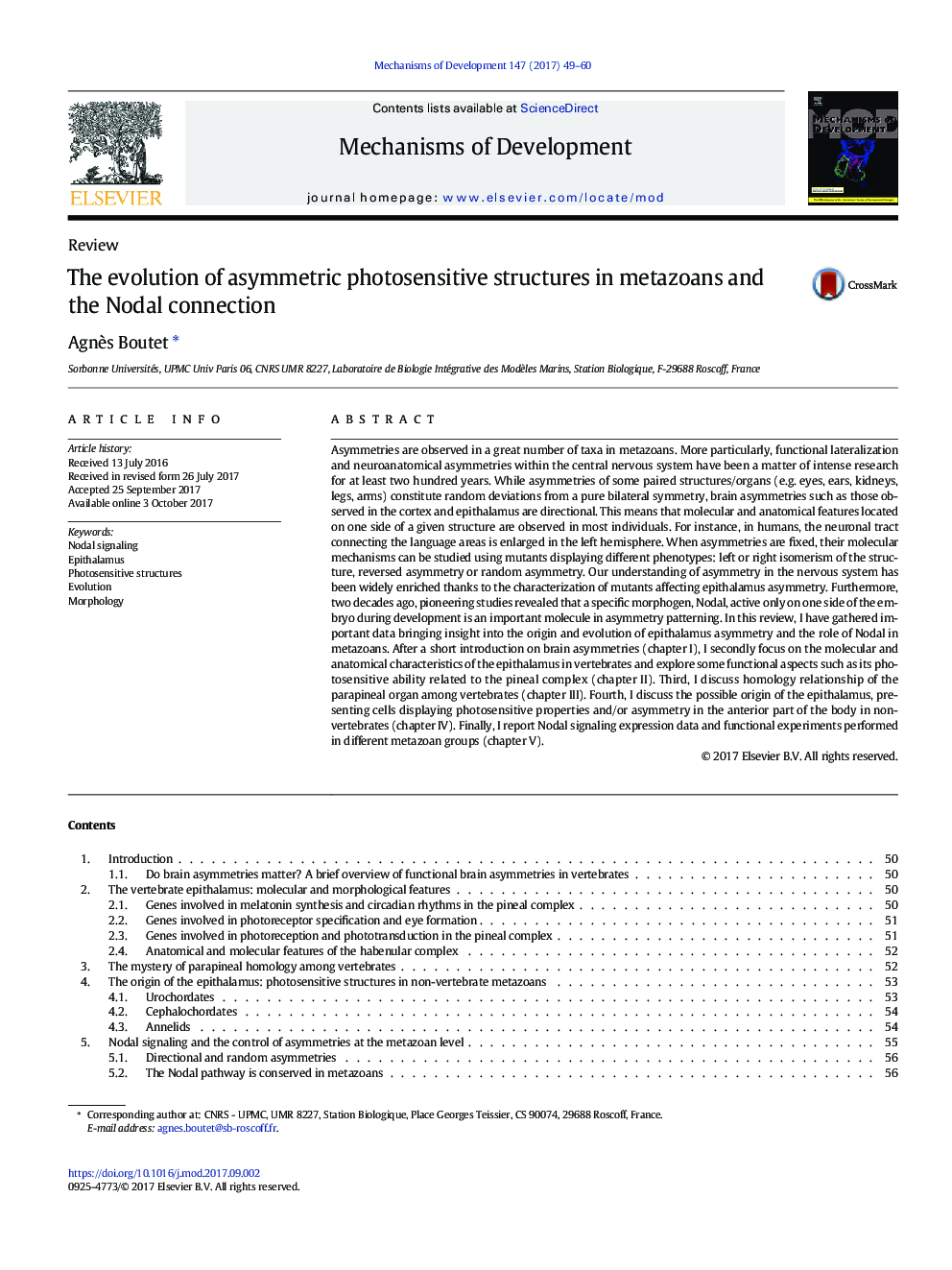| کد مقاله | کد نشریه | سال انتشار | مقاله انگلیسی | نسخه تمام متن |
|---|---|---|---|---|
| 5533799 | 1550560 | 2017 | 12 صفحه PDF | دانلود رایگان |

- The epithalamus is an asymmetric organ displaying anatomical and molecular features of photosensitive structures
- Parapineal homology can be shown using specific molecular markers and studying its biased connectivity to one of the habenular nucleus
- Asymmetric photosensitive systems can be found in non-vertebrate groups
- The ancestral role of Nodal signaling could be to break symmetry both in peripheral systems and brain structures
Asymmetries are observed in a great number of taxa in metazoans. More particularly, functional lateralization and neuroanatomical asymmetries within the central nervous system have been a matter of intense research for at least two hundred years. While asymmetries of some paired structures/organs (e.g. eyes, ears, kidneys, legs, arms) constitute random deviations from a pure bilateral symmetry, brain asymmetries such as those observed in the cortex and epithalamus are directional. This means that molecular and anatomical features located on one side of a given structure are observed in most individuals. For instance, in humans, the neuronal tract connecting the language areas is enlarged in the left hemisphere. When asymmetries are fixed, their molecular mechanisms can be studied using mutants displaying different phenotypes: left or right isomerism of the structure, reversed asymmetry or random asymmetry. Our understanding of asymmetry in the nervous system has been widely enriched thanks to the characterization of mutants affecting epithalamus asymmetry. Furthermore, two decades ago, pioneering studies revealed that a specific morphogen, Nodal, active only on one side of the embryo during development is an important molecule in asymmetry patterning. In this review, I have gathered important data bringing insight into the origin and evolution of epithalamus asymmetry and the role of Nodal in metazoans. After a short introduction on brain asymmetries (chapter I), I secondly focus on the molecular and anatomical characteristics of the epithalamus in vertebrates and explore some functional aspects such as its photosensitive ability related to the pineal complex (chapter II). Third, I discuss homology relationship of the parapineal organ among vertebrates (chapter III). Fourth, I discuss the possible origin of the epithalamus, presenting cells displaying photosensitive properties and/or asymmetry in the anterior part of the body in non-vertebrates (chapter IV). Finally, I report Nodal signaling expression data and functional experiments performed in different metazoan groups (chapter V).
Journal: Mechanisms of Development - Volume 147, October 2017, Pages 49-60